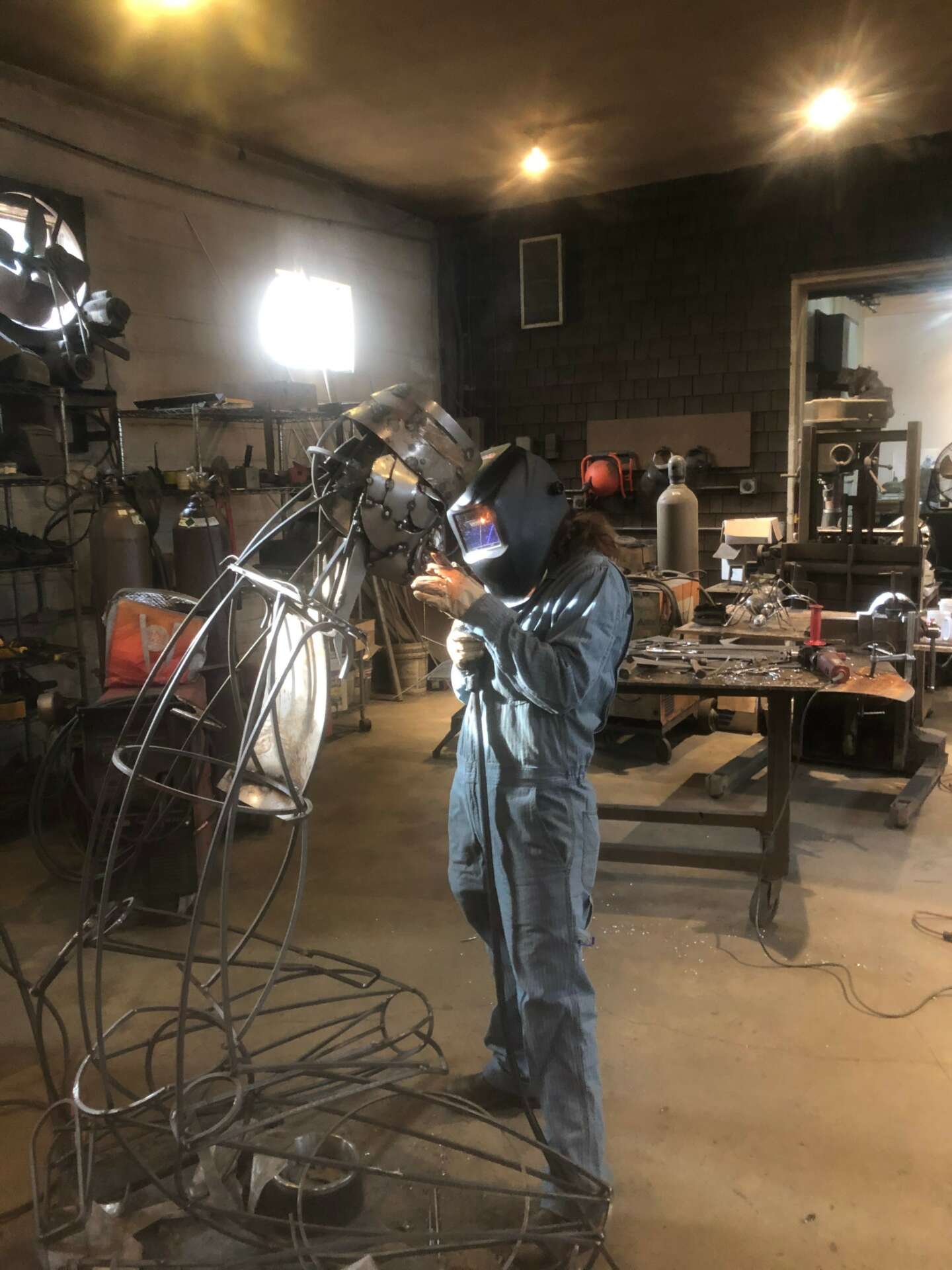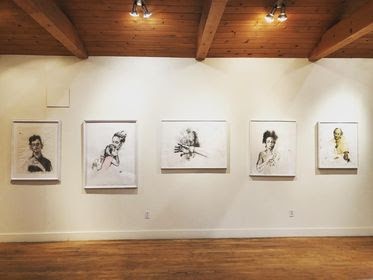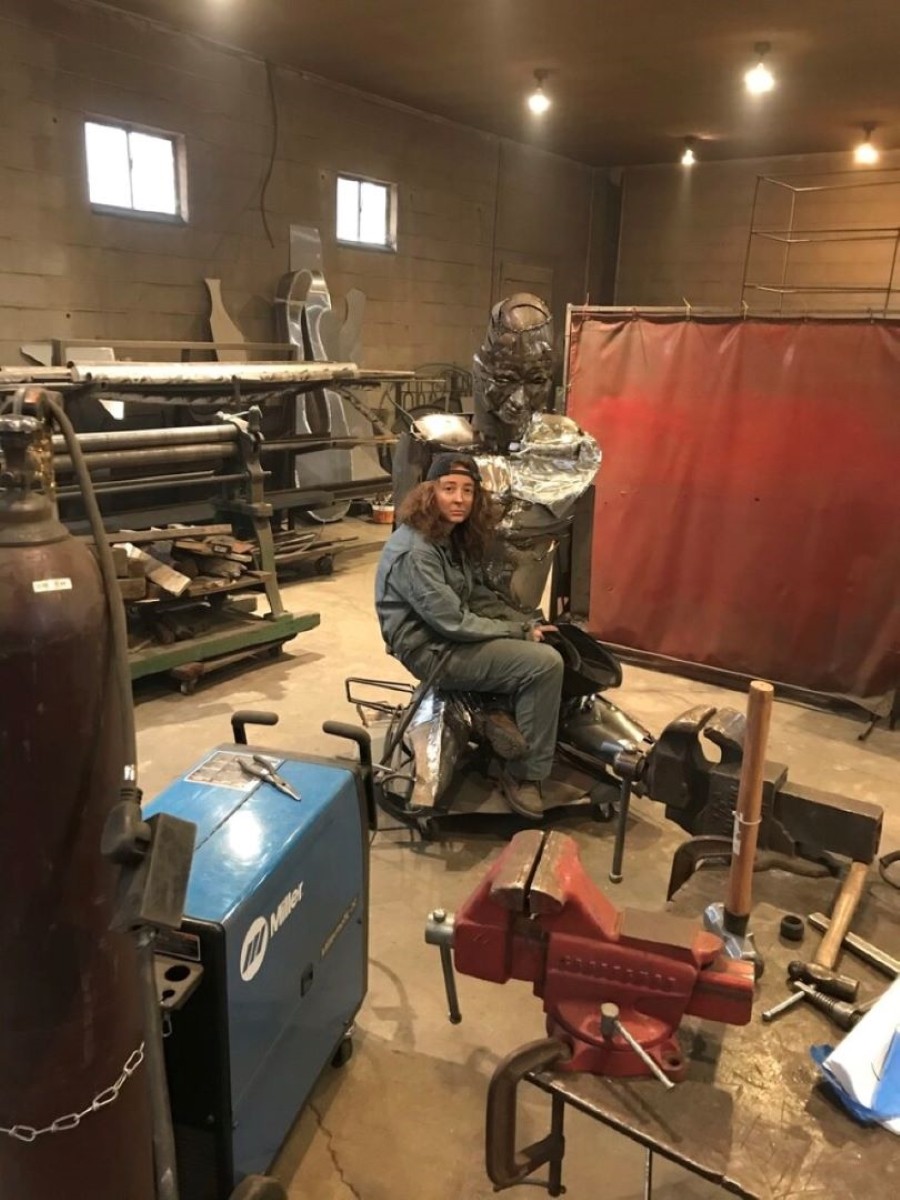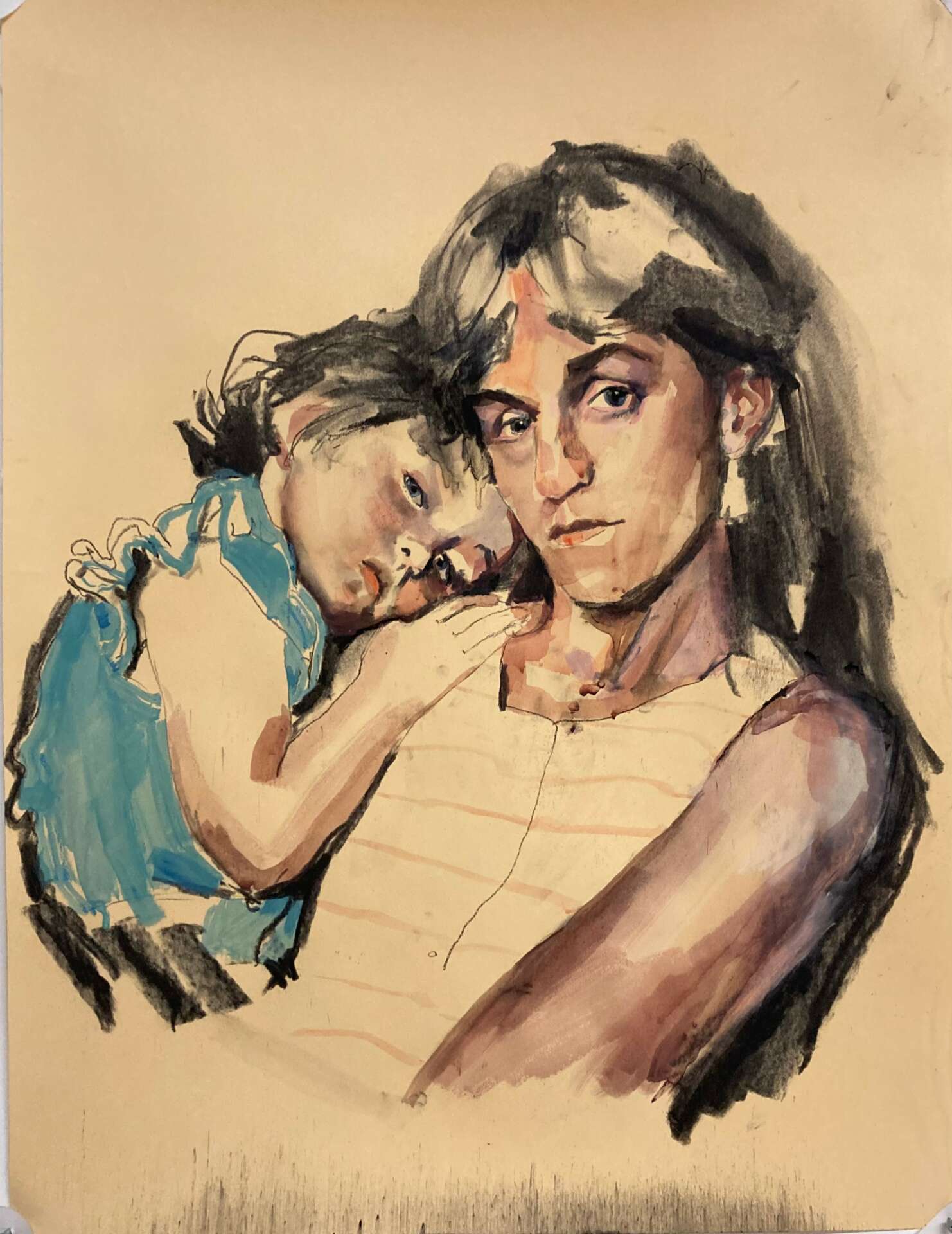We’re excited to introduce you to the always interesting and insightful M Moore. We hope you’ll enjoy our conversation with M below.
M, thanks for taking the time to share your stories with us today. Learning the craft is often a unique journey from every creative – we’d love to hear about your journey and if knowing what you know now, you would have done anything differently to speed up the learning process.
I’m still learning to “do what I do”. I basically know how to draw, everything after that is a version of drawing and adaptation.
A few lessons have stuck with me over time. (1) The mark-making tool and the “eraser” are democratic. Keep one in each hand and use them simultaneously. (2) Everything is editable. Don’t be precious or protective over some areas that you think in this fleeting moment are “really good”. If you can make it once you can make it twice. (3) Constantly move your marks around, work on the entire surface at once. (4) Literally stay on your feet and back up.
Even if you don’t have any ideas or know why you’re making something, just make it. It took me years to realize that all the time I spent aimlessly making bodega paintings on my lunch break brought me a confidence in color theory that now feels intuitive, but it’s not intuitive. It’s a direct result of practice. I spent a lot of time making “Mother and Child” paintings, only later realizing that it had prepared me for a commission to do the cover of a book focused on miscarriages.
In my experience, nothing speeds up the learning process. Speed is irrelevant when it comes to learning. Learning is a natural and inevitable byproduct of practice. Paint and you will learn. Having less time or financial freedom might feel like a learning barrier—and those factors can put the brakes on your advancement as an artist—but you can still focus and progress. I don’t think about how I can learn something faster. I learn what I need to make the art I want to create.
The most essential skill is to meet something where it’s at. Don’t struggle to make charcoal do something it will never do. You need to change, the charcoal will never change. This is true for every material and every surface. Be open, be humble and do your part.



Awesome – so before we get into the rest of our questions, can you briefly introduce yourself to our readers.
Growing up, many people in my life told me, “You should go to art school.” I initially resisted that advice, maybe out of innate rebellion, maybe out of ignorance, maybe out of financial insecurity. Instead, I worked a full time job and paid out of pocket to go to a community college. I finished that and then paid out of pocket to go to a slightly better community college. I finished that and took out student loans to go to a slightly better State University. I met a great mentor there. That mentor submitted my portfolio to a private art school where I received a BFA in painting. I had no plan but took each next step when I stumbled upon it.
Many artists find it difficult to navigate conventional pathways. We just want to spend time in the studio and make art. The extra hoops feel like a game and a distraction. I have never played the game particularly well. What I’m most proud of is my practice. That I just keep practicing. This consistency, more than any educational ascent or achievement, has molded me as an artist. I know this is the part where I am supposed to list all of my accomplishments, credits and kudos—my CV includes some awards and stuff—but who cares? Awards are nice but I don’t attach much meaning to them. I just want to paint. Awards, no awards—I will still paint.
And that’s what I’ve done. For the past 15 years, I have focused consistently on emotive portraiture. I paint daily, during my lunch hour at work, at night when I come home, during weekends in my studio in Sunset Park, Brooklyn. Commercially, I work with local municipalities to bring public art like murals and sculpture to communities across the US.
My goal is to work exclusively as an artist and draw enough income from my work to afford life’s basic necessities. I have diversified my work to include more commercial opportunities, such as public murals.



In your view, what can society do to best support artists, creatives and a thriving creative ecosystem?
When I was working toward my BFA in the mid 2000s, what I really wanted was an education in painting. Instead of learning how to achieve the perfect cadmium orange, say, or the best use of phthalo blue, I spent most of my time listening to people talk about art. While I worked a full-time job to pay for tuition, housing and food, I endured lectures on the virtues of conceptual art. Most of what I learned about art in college could have been summarized in a seminar. To be a great painter, one must paint, not talk about painting. The version of Higher Education that would be most beneficial to artists, in my opinion, would be tuition-free apprenticeships and ateliers. Higher Education across all disciplines should be free. High-interest student loans deprive everyone of the opportunity to invest in careers that align with their true talents. For working artists, it amounts to a form of economic imprisonment. We have neither the time nor the resources to advance our skills and achieve our true potential as creatives.



We’d love to hear a story of resilience from your journey.
I’ve tried to quit making art many times. It seems like an easier lifestyle choice. I look at someone like my sister and I think, what must it be like to feel completely fulfilled with a husband and a dog sitting in a house in New Jersey? It must be lovely, to have that just be the ceiling.
It turns out I just have a compulsion to make things. Mostly it feels like a terminal inch I can’t scratch. But as I’ve grown older it feels like stability, reliability. No matter what happens, amongst fear or tragedy I will always have my work.
Contact Info:
- Website: MMOORESTUDIO.com
- Instagram: https://www.instagram.com/mmoorestudio/


